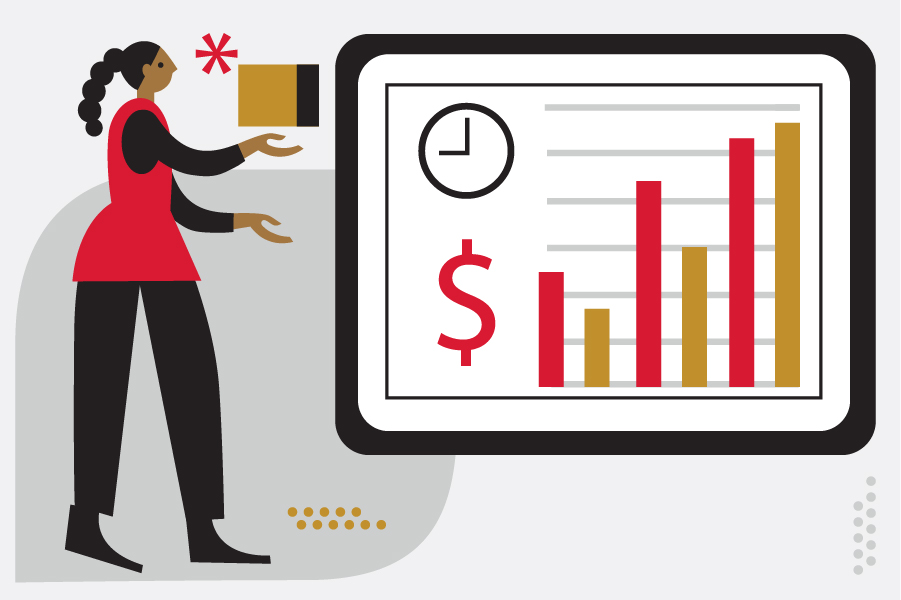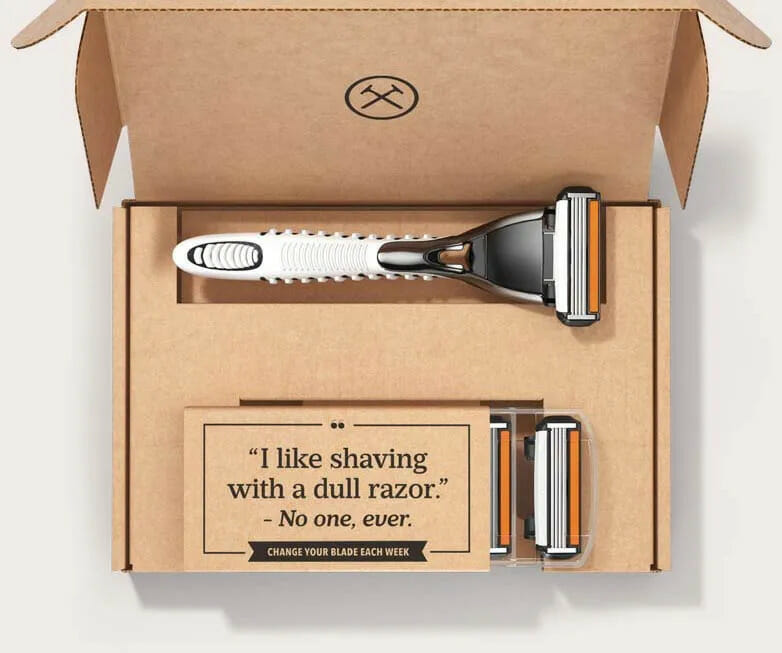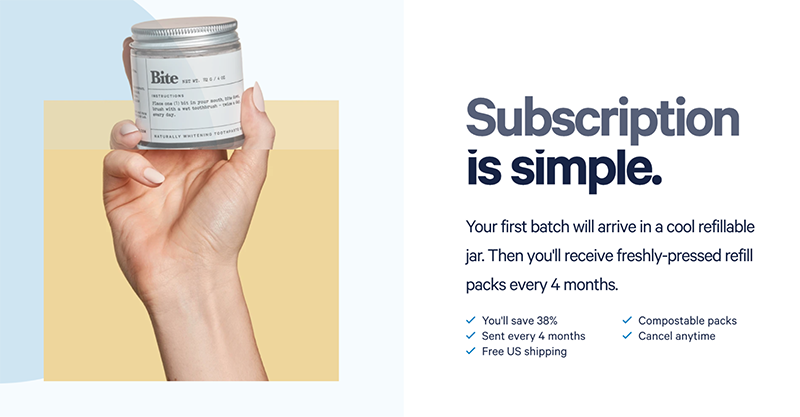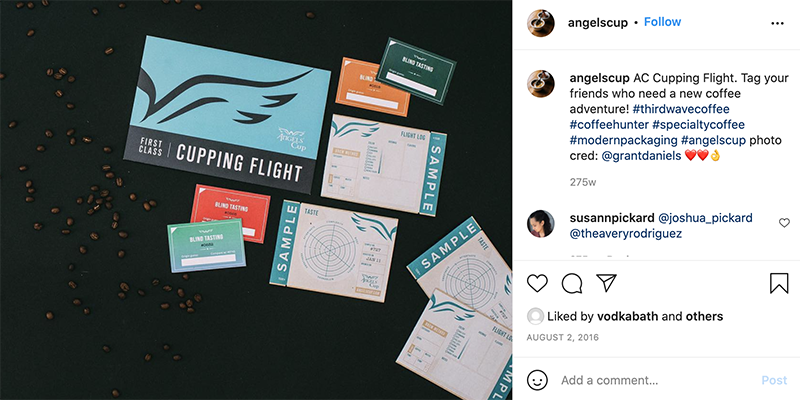Logistics
Industries
Technology & Innovations
E-commerce
E-commerce Fulfillment Services
Lease & Maintenance
Semi Trucks
Logistics
E-commerce
Lease & Maintenance
Buy Used Trucks

[Updated post from November 18, 2020]
It's certainly no secret that the subscription economy is booming. The upheaval caused by the COVID-19 pandemic has fuelled a surge in sign-ups as consumers look for alternative ways to access everything from the latest makeup products to oh-so-scarce toilet paper.
According to Order Grove, subscription enrollments rose 48% in 2020 compared with 2019 - a key sign of how subscriptions are riding the back of the ecommerce boom.
This has led many merchants to consider investing in their own subscription business models to build a recurring revenue stream and offer new value to their customers.
But what exactly does launching a subscription entail?
In this guide, we're going to cover:
A subscription is a recurring revenue model where an ecommerce brand offers access to a product or service in return for an upfront annual or monthly fee. This could be anything from a streaming service like Netflix or Spotify to a subscription box containing curated products.
The purpose of subscriptions is to build steady revenue and high customer retention by offering convenience, product discovery, and/or personalization opportunities that encourage people to stay subscribed for multiple cycles. The longer a customer stays subscribed, the higher the customer lifetime value becomes.
In sum, subscriptions help to provide both businesses and consumers with a degree of predictability; subscription companies can forecast their revenue and cash flow, while consumers can rest easy knowing that certain needs or pain points are being taken care of. A successful subscription offering is one that addresses both sides of this relationship.
As paid loyalty programs grow more popular with consumers, there is confusion over what qualifies as a subscription versus a loyalty membership.
While both these initiatives help to provide predictable revenue and foster long-term relationships with customers, there's a key difference.
In a subscription model, customers are billed on a recurring basis for a specific product or service offering. In a premium or paid loyalty program, they're paying for perks that enhance the customer experience. This includes but is not limited to free shipping, exclusive discounts, and/or early access to sales or new products.
Loyalty memberships are designed to complement a retailer’s existing products or services and encourage members to spend more. Unlike annual or monthly subscriptions, it's not an offering in and of itself.
However, it's possible for memberships programs to be a mixture of both.
Amazon Prime started out in 2005 as a premium loyalty program that granted customers free shipping for $79 per year. Since then, Amazon Prime has expanded into a full-fledged subscription service that gives members access to streaming services, discounts, cloud storage, and styling services, just to name a few. This hybrid model is a powerful value proposition that has driven membership now in excess of 200 million globally.
Replenishment is a subscription business model where a customer pays for the replacement of an essential item on a regular basis, usually monthly or quarterly.
Because the product itself usually isn’t that interesting or exciting, the selling point of replenishment subscription products is convenience. Entering into a subscription with recurring payments means consumers don’t need to remember to replace these items. Some pricing structures will also offer consumers a discount for signing up for a longer period of time.
Given the competitiveness of the direct-to-consumer marketplace, it’s not surprising that some of the most successful D2C ventures in recent years have been replenishment subscription services.
Why? Because this subscription business model enables entrepreneurs to put an exciting twist on products usually considered a chore to purchase, giving access to a lucrative gap in the market.

Possibly the world’s most famous replenishment service, Dollar Shave Club hit on a winning formula by offering consumers the ability to get fresh razor blades delivered to their doorstep every month for a small subscription fee. This simple idea quickly gained traction due to razors being an essential yet annoying item that’s often missed off grocery lists.
Curation subscriptions are often what comes to mind when people think of subscription business models. This usually takes the form of a subscription box, a carefully packaged experience that’s designed to surprise and delight a customer with a selection of products selected according to their likes and dislikes.
The appeal of curated subscription boxes is the robust opportunities for product discovery and the personalized nature of the experience. Because products are picked just for them, this helps to foster strong customer loyalty towards the brand.
Curated subscriptions are offered across a variety of product categories, with beauty, confectionery, and apparel some of the most popular.
Check out our full post on curated subscriptions here.

Birchbox is a beauty subscription box delivering five samples of trending beauty products per month according to the preferences chosen in a beauty quiz. Subscribers can review each product they receive online through their profile, which is used to inform future selections. There's also the option to buy full-size versions of products directly through Birchbox - some of which can’t be bought elsewhere.
Access subscriptions enable customers to view and use a specific service or content in exchange for a monthly or annual fee. This subscription business model is most commonly used by SaaS (Software As A Service) providers, who sometimes offer multiple pricing models with escalating levels of benefits.
As a type of subscription, access subscriptions generally require the lowest level of investment once the subscription has begun. However, it does require a lot of investment to get that service ready for consumption.

Skillshare is an online learning platform with video tutorials and courses on a huge variety of different areas, from arts and crafts to marketing. For $32 per month or $168 annually, subscribers get unlimited access to these resources. It's a simple, easy-to-understand value proposition that maximizes value for the subscriber.
An add-on subscription is when a business sells products and services on a one-off basis, but also offers customers the option to buy them as part of a subscription plan. Add-on-subscriptions offer the benefit of creating a recurring revenue stream, but without being totally reliant on a subscription business model. In sum, it’s a great way to dip your toe in the water of subscription selling to see whether it’s of interest to customers.

Bite Toothpaste offers an eco-friendly alternative to traditional toothpaste tubes by creating toothpaste tablets that customers can ‘bite and brush’ with. As well as buying one-off jars, Bite also offers a subscription plan where a fresh supply of tablets is delivered every 4 months. This hybrid replenishment model offers customers increased convenience without being forced to commit before trying the product.
While subscription business models offer would-be providers plenty of benefits, it can be tricky offering to get right. Here are some of the pros and cons you should be aware of when considering launching a subscription product.
By knowing how many subscribers you have, it’s much easier to forecast how much inventory you need for a monthly subscription box or replenishment service. This helps to minimize excess inventory, which can result in high storage costs and possible dead stock. Moreover, recurring revenue provides a reliable cash flow that enables you to reinvest in your marketing and CX management strategies with confidence.
Because recurring subscription plans bring customers into contact with your brand on a regular basis, there’s ample opportunity to gather data across multiple touchpoints to better understand what customers are looking for. Whether this takes the form of asking for customer reviews or personalization quizzes, these efforts help to strengthen customer relationships and refine your value proposition.
When customers have committed to a certain subscription period, you have the unique ability to combine new products with bestsellers and old favorites, meaning the customer is given an incentive to purchase something they might not normally consider. Likewise, if you offer companion products or services, existing customers are much more likely to trust your recommendations.
Customer retention can be incredibly expensive when a business is relying on one-off sales to build revenue. Every time a customer makes a purchase, you need to invest in email marketing, social outreach, and retargeting ads in an effort to bring them back again for a fresh sales cycle. But when a new customer signs up for a subscription plan, it’s much easier to rely on sales.
Unlike a one-off purchase, signing up for a subscription is a commitment that consumers are unlikely to make on impulse. This means that acquiring customers for a subscription service can be an expensive business. Free trials, affiliate marketing, and sponsoring social posts to get in front of your target audience can significantly affect your profitability and needs to be accounted for in your pricing strategy.
As we mentioned in our 'the subscription economy' section, the subscription market is growing at an accelerated rate. This means that new entrants are facing an uphill battle to establish familiarity with their target audience - and to keep their customer base from defecting to a different offering.
Subscription box services, especially curated offerings, can be complicated to coordinate. It requires high SKU complexity and a manually-intensive packing process that adds a lot of time to order fulfillment. If your business faces supply chain issues, this could easily affect an entire cycle of subscriptions and require substitutions that don’t suit your customer’s preferences, causing dissatisfaction.
While every subscription is fun and exciting at first, fatigue and boredom can quickly set in once the novelty of the offering wears off. Unless you find new ways to keep providing value and delighting customers, you’re looking at a high churn rate that will make it difficult to build steady, recurring revenue.
Given the growing popularity of subscription business models, it’s vital that your offering addresses a need or pain point that isn’t currently being met. Otherwise, it’s going to be challenging to compete with better-known subscriptions that have an established customer base.
If your subscription product doesn’t stand out from competitors, it’s difficult to articulate a strong value proposition to underpin your branding and marketing. If it’s no different than what’s currently on the market, there’s little reason for your target audience to care.

It may appear tough to reinvent the wheel in the intensely crowded coffee subscription market. Angel’s Cup created a unique selling point by turning their program from a simple replenishment program into a curated tasting experience.
Subscribers are sent four unique coffees every cycle, along with info cards that detail the roastery, blend, tasting notes, and more. People are encouraged to taste each coffee blind to improve their taste buds, creating a highly experiential offering that appeals to the true coffee connoisseur.
Subscriptions can be set up according to any timetable that your business chooses, such as bi-weekly, monthly, or annually. It’s a matter of deciding what makes the most sense for your product or service and your fulfillment operation.
For curated subscriptions, monthly deliveries hit a good sweet spot between allowing customers to anticipate their next delivery and not overwhelming them with too many products. You also have the option of offering several frequency options at different price points.
If you’re offering a replenishment subscription, the frequency of your delivery will depend on the supply of the product. For example, if you’re offering a vitamin or supplement subscription, you could offer 30-day or 90-day subscription pricing. Just make sure that you ship the refill before your customers’ supply runs out!
Recurring payments are the heart of any subscription offering. Unless you have a secure payment system that can manage recurring credit card processing effectively, you’re going to waste considerable chasing up late payments.
When your customer signs up for your subscription, you’ll need them to authorize your business to keep their card on file and charge it on the payment schedule they’ve selected i.e. monthly or annually.
The easiest way to do this is by signing up for a recurring payment solution, such as Ryder partner Recharge Payments. As well as handling recurring billing, Recharge also enables merchants to track key performance metrics for subscription revenue like MRR (Monthly Recurring Revenue) and ARR (Annual Recurring Revenue) for better insight into their operation.
While it’s easy to self-fulfill subscriptions when your business first starts out, this can quickly get overwhelming as orders increase. This is because subscription boxes are much more complex to manage and fulfill than standard ecommerce orders.
If boxes are curated, this entails a unique picking process for each order that’s very time-consuming without a WMS to organize the layout of your warehouse. Each box requires a unique sub-assembly process which likely involves custom packaging and inserts, which drives up the cost of fulfillment.
This is why it’s a good idea to partner with an ecommerce fulfillment provider who can take the burden of fulfillment and shipping off your shoulders by creating a fulfillment plan that’s tailored to your needs.
Ryder offers a full suite of value-added services including kitting and subassembly, as well as partnerships with the market's top packaging suppliers. Our proprietary technology platform allows you to set custom packing rules so that your subscription orders look exactly the way you want - no surprises!